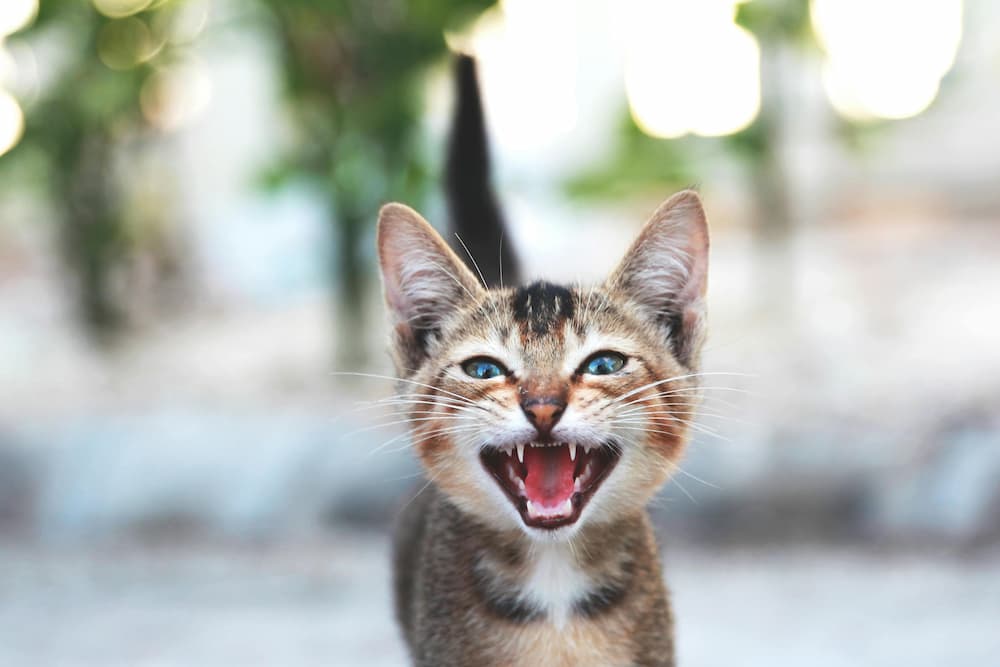
Feline Asthma

Our guide has been authored by qualified veterinarians, but should not be taken as substitute for medical advice or professional veterinary consultation. If your pet displays any unusual symptoms, we strongly advise seeking guidance from a veterinarian
Understanding Feline Asthma in cats
Feline asthma is a chronic condition affecting the bronchi- the airways that connect the trachea to the lungs. It’s characterized by episodes of wheezing or coughing and increased respiratory rate varying in frequency and severity, sometimes even to the point of respiratory distress. Appropriate treatment typically allows us to effectively manage the symptoms, giving most cats with asthma a normal quality and length of life. Severe cases may occasionally require emergency treatment.
Feline Asthma's Causes: Uncovering Triggers
Feline asthma is caused by an allergic reaction to an external substance (allergen) inhaled into the respiratory system. These allergens could include things like dust, pollen, smoke, air fresheners or other airborne irritants that are identified by the cat’s immune system as a foreign agent, causing bronchoconstriction and mucus production. These allergens might be constantly present in the cat’s surroundings or barely present, affecting the frequency of episodes.
 Recognizing Feline Asthma: Signs and Symptoms
Recognizing Feline Asthma: Signs and Symptoms
- Gagging: resembles attempts to vomit or expel something, sometimes followed by mucus discharge.
- Coughing
- Wheezing or whistling sounds
- Breathing with an open mouth
- Respiratory distress with bluish gums and fainting: possible in severe cases.
Note that the above signs only appear during episodes, and that the cat seems completely normal the rest of the time.
 Feline Asthma Diagnosis: How it's Identified
Feline Asthma Diagnosis: How it's Identified
The diagnosis relies mainly on the appearance of clinical signs at a young-to-mature age. Filming the episodes when they occur can greatly help the veterinarian in their work, despite the obvious challenge. Additional tests may include:
- Chest X-ray imaging: Vets look for the presence of a specific lung pattern called a bronchial pattern and/or lung hyperinflation.
- Blood tests: Some cats may show eosinophilia, an increase in a specific type of white blood cell due to allergic reactions.
- Bronchoalveolar lavage (BAL) under full anesthesia: Sampling the bronchial fluids may reveal inflammatory cells and bacterial infection.
- Bronchoscopy under anesthesia: Inserting a camera into the bronchi to visualize the walls and collect samples.
 Treating Feline Asthma: Options and Approaches
Treating Feline Asthma: Options and Approaches
While feline asthma is a lifelong condition, appropriate treatment makes it manageable to where cats can maintain a good quality of life. Medication may only need to be administered during flare-ups or certain seasons, but some patients may require more regular preventative treatments, such as:
- Bronchodilators: Keeping the airway diameter as open as possible to combat bronchoconstriction.
- Steroids: Effective treatment for reducing inflammation and swelling. Due to side effects, it’s best to aim for the lowest possible dose and frequency. A steroid inhaler has less side effects than a systemic steroid (injectable or oral).
- During respiratory emergencies, it’s crucial to avoid stress and seek immediate care. Typical treatment includes oxygen administration and intravenous medication.
- Antibiotics: A vet will prescribe antibiotics in cases of secondary bacterial infection.
Ideally, these medications should be administered using a special inhaler. Other methods include oral administration or injection.
In cases of respiratory distress that include rapid breathing with an open mouth, pale or bluish gums and tongue, or fainting, seek emergency care. Initial treatment includes providing oxygen, calming the cat to reduce the stress component, and administering medications intravenously.
Feline Asthma: Surprising Facts

Feline asthma is a relatively common respiratory condition, affecting up to 5% of all cats.

The disease affects primarily young adults, with the typical onset age ranging from 2 to 5 years.

Airway collapse has a severe effect- a reduction in the bronchial diameter by half results in a 16-fold drop in airflow to and from the lungs!
 Vet's Tip: Dealing with Feline Asthma
Vet's Tip: Dealing with Feline Asthma
The most effective and safest way to manage feline asthma is by administering medications using an inhaler. The medication is absorbed directly into the airways, avoiding long-term side effects that can come with regular systemic use of certain medications, like steroids. However, not all cats will cooperate with the process, and it can cause significant stress- a risk factor for cats suffering from this condition in and of itself. A special spacer is necessary to administer an inhaler to your cat.
In such cases, opting for long-term steroid injections is a legitimate solution. Due to side effects, though, it’s essential to limit their use to necessary cases, reduce doses and frequency as much as possible, and perform routine blood tests to monitor blood sugar levels and kidney and liver functions.




Price Tag

Latest in Research and Treatments
Asthma is caused by an overreaction of the immune system. Immunotherapy, which aims to teach the immune system to react differently to allergens, could offer a cure for the disease rather than just controlling symptoms.
Clinical studies show varying degrees of success. The treatment involves identifying an individual’s allergens and then exposing them to those allergens regularly in a process called desensitization. This helps the immune system get used to these allergens, hopefully preventing episodes.
Did you know?
Enrolling in Animalia Pet Insurance
while your pet is healthy is a wise decision.
Waiting until a disease develops means it won't be covered.






